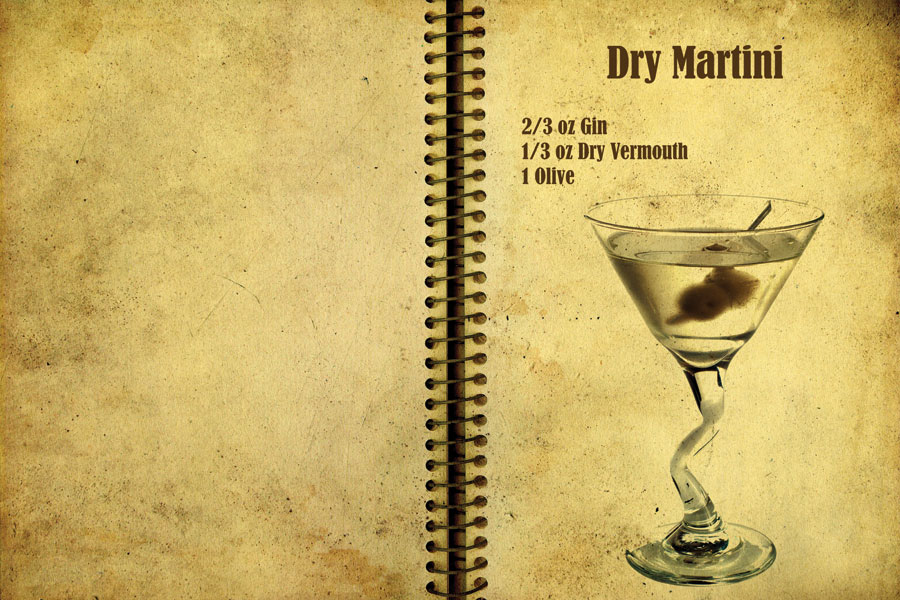
by Zee Krstic
A modern take on old favorites. But as the new James Bond retorted when asked if shaken or stirred, sir: ‘Do I look like I give a damn?’/em>
Remember that old saying ‘history repeats itself?’ Well, it seems Gram Gram was right when she said it. We all hold on to that worn leather jacket from Chess King or the endless pairs of acid wash jeans, one day hoping we can whip them out of the closet once more. Although fashion is constantly in and out, history and the past still hold value at our favorite nightlife spots. From design to culinary experiments, bars and restaurants within the five boroughs have returned to their roots with a modern day twist. Some of the cocktails our parents used to sip at the Country Club back in the day are back in style at our local hotspots.
Returning from the nineteenth century is the Rob Roy. Stirred with sweet vermouth, bitters and your choice of Scotch, the Rob Roy has dominated the classiest of joints since the late nineteenth century. Introduced by the creative minds over at the Waldorf Hotel Bar, the Rob Roy was named for the premier of Rob Roy, an operetta opening in the city during the second half of 1894. Similar to the Manhattan, the Rob Roy is exclusively served with Scotch whisky and can be made dry or sweet with the correct mixture of vermouth. At Death & Co., an extraordinary space located in the East Village where the newest infusions can be found, the Rob Roy is once again being revitalized for social New Yorkers. By mixing both Jerry Thomas Decanter Bitters and Peychaud’s with Carpano Antica Vermouth, Death & Co. has introduced the perfect Rob Roy with a dry twist. Not to mention the application of Caol Ila Scotch Whiskey, reintroducing this classic cocktail to the newest generation.
The Mojito serves as inspiration for mixologists around the globe. A delightful concoction of white rum, sugar, lime, mint and sparkling water has rocketed the clear highball Mojito into a hazy, balmy fame. Originating from Cuba and the Barcardi family, the Mojito emerged at the same time as the ‘El Draque’, another mixture dedicated to Sir Fancis Drake. Many historians claim the African slaves working the plantations in Cuba were crucial to the cocktail’s creation due to their extraction of Guarapo, the same sugar cane juice used in Mojitos today. Although there are many different spins on the Mojito, renowned cocktail bar Little Branch of the West Village, chooses to serve up the Queens Park Swizzle, a mojito with a Trinidad twist. This blood red deviation of the classic drink is mixed with various bitters, alluding to an abrupt tartness.
A classic amongst classics, the Old Fashioned comes to life with bitters and dissolved sugars, citrus rind, and a touch of your choice of alcohol. Unsurprisingly, the word ‘cocktail’ was derived in an response to a letter asking to define the word in an 1806 issue of The Balance and Columbia Repository. The editor responded with a definition of a strong mixture of alcohol, bitters, water, and sugar, or referred to as a ‘bittered sling’. This ‘bittered sling’ would later become the standard Old Fashioned at the Pendennis Club in Kentucky, as a Bourbon version of the drink. It would later reappear at the Waldorf-Astoria here in the city. To the north at Ginny’s Supper Club in West Harlem, the Old Fashioned remains a strong favorite among patrons. Mixed with bitters and demarara syrup for the citrusy kick, Rye whiskey dominates the Old Fashioned at Ginny’s instead of traditional brandy.
Warm enough even for the coldest of nights, Irish Coffee is a classic favorite among bars and restaurants worldwide. Consisting of hot coffee, whiskey, and sugar with thick non-whipped cream, there have been countless variations of Irish Coffee recorded throughout history. However, historians mutually agree on one Joe Sheridan, a head chef at Foynes Airport (the precursor to Shannon International Airport) as the drink’s creator. It is said that a group of Americans disembarked from a Pan Am flying boat during a winter storm and asked for a warming drink. Adding whiskey to his espresso, Sheridan informed his guests that it was ‘Irish Coffee’, and so the cocktail was born. Serving original cocktails since 2009, Dutch Kills Bar in Long Island City is proud to offer this historically rich concoction to their urban clientele. While countless establishments offer Irish Coffee, Dutch Kills is different in offering patrons Añejo Rum, Jamaican rum, Tequila Reposado, or even Bourbon with their interpretation of the classic. Expect solid cream, because the minds at Dutch Kills aren’t amateurs!
An older yet classic favorite is the Sidecar, traditionally mixed with cognac, Grand Marnier, and lemon juice. A cousin to the prehistoric Brandy Daisy, the origin of this classic isn’t set in stone, but was first seen at the end of World War I in the various lounges of Paris. The Ritz Hotel was the first to claim the Sidecar as their own before the recipe for the drink appeared in Harry’s ABC of Mixing Cocktails in 1922. Amongst many other recreations, The Astor Room of Astoria and its in-house The Beaver Bar have been said to serve this classic as the “‘Side Car’ Named Desire”. This twist is lined with syrup, lime juice, lemon juice and is mixed with nontraditional Buffalo Trace Bourbon and Cointreau in lieu of Grand Marnier.
